#political protests
Explore tagged Tumblr posts
Text
I’m not alone in noticing the similarities.
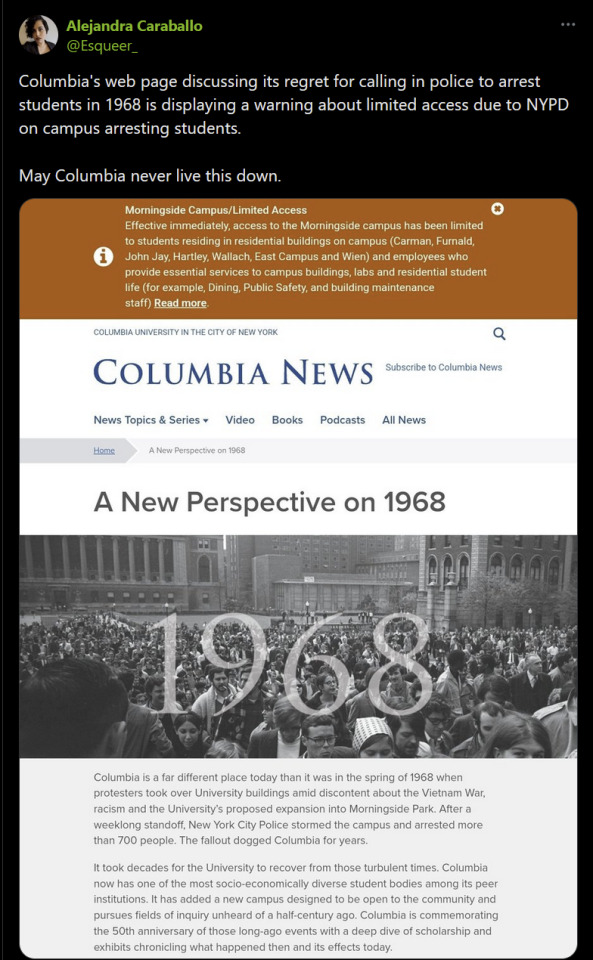
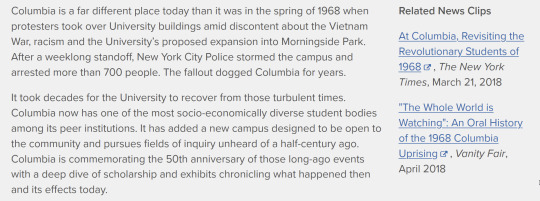
you can taste the fucking irony
12K notes
·
View notes
Text
14K notes
·
View notes
Text
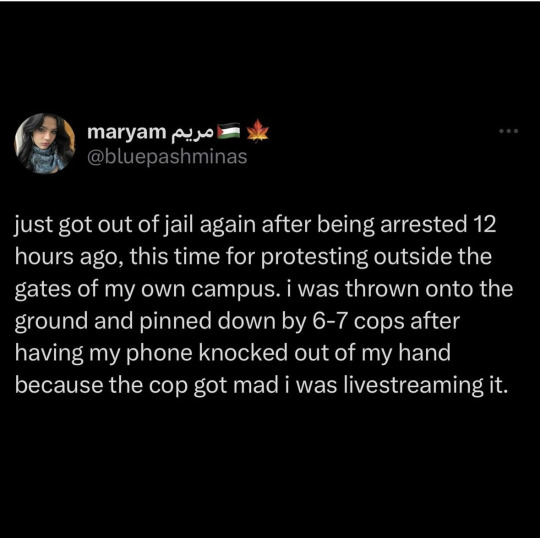
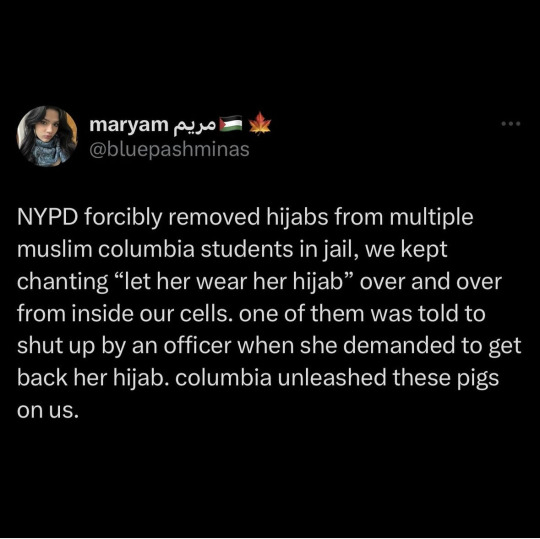
#police brutality#free palestine#palestine#important#anti israel#free gaza#gaza#current events#columbia university#protests#gaza solidarity encampment#nypd#joe biden#USA#us politics
47K notes
·
View notes
Text
Sometimes I wish we would start calling out the performative radicalism on this site for the poser bullshit it is. "Remember, it's always morally correct to kill a cop!" "Don't forget to firebomb your local government office!" "Wow, it sure would be a shame if these instructions on how to make a molotov cocktail got spread around!"
Okay. But you're not killing cops or firebombing government offices. You are posting on a dying microblogging website to a carefully-curated echo chamber that has radicalized itself into thinking that taking the absolute most extreme position on any subject is praxis but that anyone discussing the most practical way to effect actual change is your sworn enemy. You do not have the street cred OR the activist cred to be talking about killing cops, babe.
#thinking about the person i saw saying that if you're at a protest#and other protesters try to stop you from becoming violent you should just kill them bc 'peace police are still police'#even taken as hyperbole that's simply dumb as shit on every conceivable level#it's also pretty blatantly hypocritical coming from people who are usually self-avowed prison/death penalty abolitionists#like i'm sorry but you don't get to be a death penalty abolitionist and also call for the death of your political enemies online#this isn't a major issue or anything i'm just bored and annoyed
65K notes
·
View notes
Text
BPSC Exam Protest: Chaos at Gandhi Maidan Amid Hunger Strike
The BPSC row marks a pivotal moment in Bihar’s politics and administration. Kishor’s hunger strike has placed the onus on the state government to resolve the issues affecting thousands of aspirants. The protest now moves to the High Court, where justice will be tested. Will it prevail or become another reminder of systemic recruitment problems? For more updates on the BPSC controversy and Bihar politics, visit our blog frequently.
#BPSC controversy#Bihar politics#government recruitment issues#Kishor hunger strike#Bihar administration#aspirants' plight#systemic problems#Bihar High Court#BPSC updates#political protests
0 notes
Text
ok so in the span of like 5 hours:
- the south korean president declared martial law (the first time since s korea stopped being a military dictatorship in the 80s)
- claims his political opponents are insurgents working on behalf of north korea and communism
- declares that all political activity must cease (inc the national assembly/parliament), all media must be under the control of the military, and all protests/strikes are illegal
- the opposing political party immediately assembles at the national assembly in the middle of the night
- holds an emergency vote that goes thru 190-0 to declare the end to martial law (while barricading the entrances to prevent the military from entering and removing them)
- the president concedes an hour later
- civilian protesters in the streets are calling for the impeachment & arrest of the president
please feel free to add details/correct me
as of 2:40 EST Dec 3 2024
#international politics#politics#south korea#south korean politics#military coup#protests#government#govt#news#breaking news#10k
11K notes
·
View notes
Text
Congress to launch nationwide stir
The Opposition Congress on Tuesday announced that they will launch a nationwide agitation on August 22 over US short-seller Hindenburg's latest report claiming a nexus between the SEBI chairperson and the Adani Group. The Congress is demanding the removal of SEBI chairperson Madhabi Buch following the accusations made by Hindenburg.
#Congress Nationwide Stir#Political Protests#Congress Party Movement#National Agitation#Political Campaigns#Congress Party India#Nationwide Protest#Political Uprising#Congress Rally#National Political Action
0 notes
Text

"POUR LE PREMIER MAI - On aurait dit que la guerre était déclarée, le premier mai dernier, à Paris, alors que les troupes patrouillèrent les rues avec des chars d'assaut, des mitrailleuses. etc. Malgré in crainte générale, la journée fut plutôt calme, - from La Patrie (Montreal). May 16, 1934. Page 20.
#paris#may day#aid to the civil power#armée française#military garrison#law and order politics#political protests#political demonstration#communists#anti-communism#the great depression#interwar period
0 notes
Text
#tiktok ban#tiktok censorship#censorship#us politics#protest#protection#revolution#winter boots#around the world#world news#news#fuck trump#fuck fascists#fuck billionaires#eat the fucking rich#donald trump#trump administration#twitter#elon musk#elongated muskrat#fuck elon musk#fuck fascism#fuck elongated muskrat#x twitter#twitter x#instagram#facebook
3K notes
·
View notes
Text
I’m just here to remind everyone once again that we can’t stop protesting and boycotting and spreading the word for Palestine, even if it’s been a while. The people in power (mainly the Israeli and US governments) are relying on us losing steam.
And I do want to mention that a small bit of hope to be found among all of this is that things aren’t losing steam. I still see dozens of posts about Palestine every day, I see footage of protests almost every day, and the boycotts are working. I just want to encourage everyone that we just need to keep it up! I’ve seen so many social issues fade out over time, a week of outrage and then things settle down, but that isn’t the case here and I really respect everyone who’s still posting and protesting and seeking out information to end this once and for all. Focus on that hope, and use it to keep going :)
#palestine#pro palestine#free palestine#israel#anti israel#us politics#world politics#social issues#protest#boycott#from the river to the sea palestine will be free
22K notes
·
View notes
Text

#ethel cain#mother ethel#mother cain#hayden anhedönia#donald trump#elon musk#elongated muskrat#us politics#united states#protest#deny defend depose#class solidarity#class consciousness#meme page#us news#world news#the hunger games#the hunger games katniss#animal farm#the handmaids tale
3K notes
·
View notes
Text
"With Donald Trump set to take office after a fear-mongering campaign that reignited concerns about his desire to become a dictator, a reasonable question comes up: Can nonviolent struggle defeat a tyrant?
There are many great resources that answer this question, but the one that’s been on my mind lately is the Global Nonviolent Action Database, or GNAD, built by the Peace Studies department at Swarthmore College. Freely accessible to the public, this database — which launched under my direction in 2011 — contains over 1,400 cases of nonviolent struggle from over a hundred countries, with more cases continually being added by student researchers.
At quick glance, the database details at least 40 cases of dictators who were overthrown by the use of nonviolent struggle, dating back to 1920. These cases — which include some of the largest nations in the world, spanning Europe, Asia, Africa and Latin America — contradict the widespread assumption that a dictator can only be overcome by violence. What’s more, in each of these cases, the dictator had the desire to stay, and possessed violent means for defense. Ultimately, though, they just couldn’t overcome the power of mass nonviolent struggle.
In a number of countries, the dictator had been embedded for years at the time they were pushed out. Egypt’s Hosni Mubarak, for example, had ruled for over 29 years. In the 1990s, citizens usually whispered his name for fear of reprisal. Mubarak legalized a “state of emergency,” which meant censorship, expanded police powers and limits on the news media. Later, he “loosened” his rule, putting only 10 times as many police as the number of protesters at each demonstration.
The GNAD case study describes how Egyptians grew their democracy movement despite repression, and finally won in 2011. However, gaining a measure of freedom doesn’t guarantee keeping it. As Egypt has shown in the years since, continued vigilance is needed, as is pro-active campaigning to deepen the degree of freedom won.
Some countries repeated the feat of nonviolently deposing a ruler: In Chile, the people nonviolently threw out a dictator in 1931 and then deposed a new dictator in 1988. South Koreans also did it twice, once in 1960 and again in 1987. (They also just stopped their current president from seizing dictatorial powers, but that’s not yet in the database.)
In each case people had to act without knowing what the reprisals would be...
It’s striking that in many of the cases I looked at, the movement avoided merely symbolic marches and rallies and instead focused on tactics that impose a cost on the regime. As Donald Trump wrestles to bring the armed forces under his control, for example, I can imagine picketing army recruiting offices with signs, “Don’t join a dictator’s army.”
Another important takeaway: Occasional actions that simply protest a particular policy or egregious action aren’t enough. They may relieve an individual’s conscience for a moment, but, ultimately, episodic actions, even large ones, don’t assert enough power. Over and over, the Global Nonviolent Action Database shows that positive results come from a series of escalating, connected actions called a campaign...
-via Waging Nonviolence, January 8, 2025. Article continues below.
East Germany’s peaceful revolution
When East Germans began their revolt against the German Democratic Republic in 1988, they knew that their dictatorship of 43 years was backed by the Soviet Union, which might stage a deadly invasion. They nevertheless acted for freedom, which they gained and kept.
Researcher Hanna King tells us that East Germans began their successful campaign in January 1988 by taking a traditional annual memorial march and turning it into a full-scale demonstration for human rights and democracy. They followed up by taking advantage of a weekly prayer for peace at a church in Leipzig to organize rallies and protests. Lutheran pastors helped protect the organizers from retaliation and groups in other cities began to stage their own “Monday night demonstrations.”
The few hundred initial protesters quickly became 70,000, then 120,000, then 320,000, all participating in the weekly demonstrations. Organizers published a pamphlet outlining their vision for a unified German democracy and turned it into a petition. Prisoners of conscience began hunger strikes in solidarity.
By November 1988, a million people gathered in East Berlin, chanting, singing and waving banners calling for the dictatorship’s end. The government, hoping to ease the pressure, announced the opening of the border to West Germany. Citizens took sledgehammers to the hated Berlin Wall and broke it down. Political officials resigned to protest the continued rigidity of the ruling party and the party itself disintegrated. By March 1990 — a bit over two years after the campaign was launched — the first multi-party, democratic elections were held.
Students lead the way in Pakistan
In Pakistan, it was university students (rather than religious clerics) who launched the 1968-69 uprising that forced Ayub Khan out of office after his decade as a dictator. Case researcher Aileen Eisenberg tells us that the campaign later required multiple sectors of society to join together to achieve critical mass, especially workers.
It was the students, though, who took the initiative — and the initial risks. In 1968, they declared that the government’s declaration of a “decade of development” was a fraud, protesting nonviolently in major cities. They sang and marched to their own song called “The Decade of Sadness.”
Police opened fire on one of the demonstrations, killing several students. In reaction the movement expanded, in numbers and demands. Boycotts grew, with masses of people refusing to pay the bus and railway fares on the government-run transportation system. Industrial workers joined the movement and practiced encirclement of factories and mills. An escalation of government repression followed, including more killings.
As the campaign expanded from urban to rural parts of Pakistan, the movement’s songs and political theater thrived. Khan responded with more violence, which intensified the determination among a critical mass of Pakistanis that it was time for him to go.
After months of growing direct action met by repressive violence, the army decided its own reputation was being degraded by their orders from the president, and they demanded his resignation. He complied and an election was scheduled for 1970 — the first since Pakistan’s independence in 1947.
Why use nonviolent struggle?
The campaigns in East Germany and Pakistan are typical of all 40 cases in their lack of a pacifist ideology, although some individuals active in the movements had that foundation. What the cases do seem to have in common is that the organizers saw the strategic value of nonviolent action, since they were up against an opponent likely to use violent repression. Their commitment to nonviolence would then rally the masses to their side.
That encourages me. There’s hardly time in the U.S. during Trump’s regime to convert enough people to an ideological commitment to nonviolence, but there is time to persuade people of the strategic value of a nonviolent discipline.
It’s striking that in many of the cases I looked at, the movement avoided merely symbolic marches and rallies and instead focused on tactics that impose a cost on the regime. As Donald Trump wrestles to bring the armed forces under his control, for example, I can imagine picketing army recruiting offices with signs, “Don’t join a dictator’s army.”
Another important takeaway: Occasional actions that simply protest a particular policy or egregious action aren’t enough. They may relieve an individual’s conscience for a moment, but, ultimately, episodic actions, even large ones, don’t assert enough power. Over and over, the Global Nonviolent Action Database shows that positive results come from a series of escalating, connected actions called a campaign — the importance of which is also outlined in my book “How We Win.”
As research seminar students at Swarthmore continue to wade through history finding new cases, they are digging up details on struggles that go beyond democracy. The 1,400 already-published cases include campaigns for furthering environmental justice, racial and economic justice, and more. They are a resource for tactical ideas and strategy considerations, encouraging us to remember that even long-established dictators have been stopped by the power of nonviolent campaigns.
-via Waging Nonviolence, January 8, 2025.
#Chile#Egypt#Germany#Pakistan#Protests#United States#us politics#fuck trump#authoritarianism#revolution#nonviolence#nonviolent resistance#protest#america#protests#democracy#elections#trump administration#good news#hope#hopepunk#hope posting
4K notes
·
View notes
Text
ICE raids are happening.
Any immigrants, no matter how long you have been a citizen of the USA, is at risk of being deported either out of the country as a whole or into what are basically concentration camps. Raids starting in Chicago, Illinois. and spreading to other major cities with high POC and Hispanic populations. The US Immigrations and Customs Enforcement (ICE) and Customs and Border Patrol (CBP) have started raiding homes and families in California.
There are no "protected locations" as of January 21, 2025. Hospitals, schools, and churches are all at risk of being raided, where before these places were deemed safe and off limits to raids.
When it comes to spotting an ICE agent, look for these:
Weirdly neat/well kept hair (shaved heads, side parts, military burs for men; low buns, high ponytails, close cropped bobs for women)
Oversized jacket (long and bulky outerwear makes it easier to hide tools/equipment without being suspicious)
Both hands in pockets
Many undercover agents/cops buy cheap plain clothes off the racks so they aren’t seen in their own clothes. This can make their outfit seem awkward
Sweatshirts with the hood up
Sports apparel (warm up jacket, sweats, etc) with non-sports clothes (jeans, cargo shorts)
Cargo pants/shorts (usually full of items like their badge, flashlight, taser, pepper spray, backup handcuffs, zip ties)
Military or hiking style boots, sometimes chunky sneakers (extra points if none of it matches anything in their outfit)
Outline of a gun in their pants/shirt (easy to see when bending, leaning, or raising arms) (NO NOT SAY ANYTHING)
Overly friendly
Overly inquisitive
“How old are you” and “what do you know about this happening” are both red flags, along with generally odd and personal questions
Don’t fit in
Mismatched pairs in public spaces (usually cops do these things in pairs. They don’t talk to each other or acknowledge each other much, if at all)
DO NOT SAY ANYTHING UNTIL YOU ARE 100% SURE
YOUR BEST BET IS NOT TO SAY ANYTHING UNTIL THE SUSPECT STARTS ACTING OFF AND GETTING PUSHY
COPS ARE NOT OBLIGATED TO TELL YOU THAT THEY ARE UNDERCOVER
COPS CAN AND WILL LIE TO YOU
SCREAM “LA MIGRA” AT THE TOP OF YOUR LUNGS
For protesting:
N95 masks
Respirator/gas mask if you have access to one
Water water water water water (I hate to say it, but disposable one use bottles are best here. If it comes to it, you need to be able to drop and run.) Use for flushing wounds, flushing eyes of tear gas, and of course drinking.
Snacks! You'll be doing a lot of walking and/or running and need to keep that energy up. Trail mix, dried fruit, nuts, granola bars, crackers, jerky/meat sticks, fruit snacks, candy, etc. Think of it like packing your lunchbox for a field trip.
Eyedrops (teargas is a bitch)
Goggles (I bring my old snowboarding goggles)
If you are wearing a t-shirt or have exposed skin, put on fake/temporary tattoos. If you are brought into something and they say you were there, showing a picture of you with the tattoos, show them where that tattoo would be and how there’s nothing there. How would you get rid of a giant flower on your forearm in 2 days anyways?
Wigs fall under the same category as tattoos. The person they're claiming to be you has a blonde bob and you have green hair past your shoulders.It also makes it possible to go with a completely different color without the use of hair dye. This means if they try to arrest you later and try to prove it was you by taking your hair and testing for dye, it won't come back the way they hope. (Thank you @violetrosepetals for this addition!)
Hide your hair. I tuck my hair into my beanie since it’s short. If you have longer hair, try to do the same or tuck it into your shirt. Balaclavas are also a good choice, as they cover both your face and hair.
Power bank
Chargers
Helmet. Any is fine, my personal choice is a skating helmet since they’re rounder and can take more damage, but tactical is also good
Hand sanitizer
Gloves with hard knuckles (tactical gloves). These pack a good punch even if you don't have the correct form. Don't have those? Wrist guards for roller skating/skateboarding work kinda like that too. More of a slapping motion, but still hurt like a bitch. Extra points if they're all scuffed up from use and falls.
Bandanas. Somebody might need one for their face or hair, maybe you need to get dirt off somebody’s face, maybe somebody got injured. They’re great for anything and everything.
Cash (try to stick to cash, your card can be tracked)
Medications if you take them. If you get arrested or happen to somehow be away for longer than expected after the protest, it’s always good to have emergency meds
FIRST AID ALL THE FIRST AID (Tourniquet, Quikclot, chest seal, trauma shears, gauze, bandages, duct tape, and all the usual stuff you’d have in there)
Good shoes. Boots and sneakers are your best choices. Not heels, not platforms, not sandals. Good boots or shoes that won't come off your feet too easily when you run. Steel toed shoes are a great option. Your toes won't be squashed, but also it'll hurt someone a lot more if you start kicking.
Spare socks. Trust me. You can use them to stop bleeding if it comes to it, but also you can put rocks in there and boom weapon. Also if the socks you're wearing get wet.
As much covering clothing as you can handle. Plain jeans, plain hoodie, plain t-shirt, keep yourself as anonymous as possible. Black and baggy is best.
Photocopy of your ID, not your real one.
Sunscreen!
Make sure your clothes have pockets, even if you have a bag. You want everything to be easily accessible.
Do not wear contact lenses. If tear gas is used, that will make everything so much worse. Wear your glasses or go blind. If you have overly unique or identifiable frames, goggles are your friend here. Get some goggles that will fit over your frames, preferably ones that are tinted.
If you use mobility aids, cover defining features. Logos, brand names, colors, stickers, all of it. Take some old plain t-shirt and tie it around your wheelchair’s backrest. Wrap your wheelchair frame in cling wrap, then duct tape, or plain black self adhering medical tape. Cover stickers on your cane or crutches the same way. Electric chair? You have a little more work, but you can do it. Wrap it up. Same idea. Walker? Same thing. Cover. It. All.
If you are bringing a bag, make sure that bag is as plain as possible. No pins. No patches. No keychains. Except maybe a pride flag so people know which team you're playing on.
Scarf or keffiyeh if you have one. They have many uses!
Write a reliable phone number (of someone who is not at the protest with you) on your body. On the off chance you get arrested, that is your emergency contact.
Pocket knife.
Pepper spray/mace/bear spray
if you get tear gassed, shake around first before using water. Most tear gas is more of a powder and water has a high likelihood of just spreading it around. (Thank you @actually-a-bread-loaf for this addition!)
Tennis rackets also work wonderfully for chucking tear gas canisters back at those throwing them. Anybody asks, you're going out to play tennis with friends later. Baseball bats also work! (Thank you @azul-nova-24 for this addition!)
Anything you can throw. Soup for my family.
IF YOU CAN, LEAVE YOUR PHONE AT HOME
IF YOU HAVE TO TAKE IT WITH YOU, TURN OFF LOCATION SERVICES ON ALL APPS AND TURN OFF BIOMETRICS (FACE ID AND FINGERPRINT) SO YOU CAN ONLY UNLOCK YOUR PHONE WITH YOUR PASSWORD
COPS CAN FORCE YOU TO OPEN YOUR PHONE WITH YOUR FINGERPRINT OR FACE ID
MAKE SURE SOMEBODY KNOWS GENERALLY WHERE YOU ARE
If you see a potential or active raid, take pictures and note the time and location. Post online if you can, as well.
You have the right to remain silent. State that you wish to remain silent. Avoid giving information about anybody's immigration status. You have the right to refuse to sign anything before speaking to an attorney. You have the right to refuse searches of your car, your home, and yourself. Schools do not collect a child's immigration status.
I do not want to scare anybody, but this is what life is right now. That man does not care how long you have been a citizen of this country. If you are not a white, cisgender, heterosexual, Christian male, you are seen as less than by men in power. You are not less than. You are a threat to them, and they are scared. Keep it that way.
Even if you're not currently protesting, it's good to know this just in case. Things are happening very quickly, and there is a very high chance of it changing very quickly within the next four years.
Here's the link to my post on what to bring in terms of first aid.
If you cannot attend protests, that’s fine. Do what’s best for you. Even just reposting information helps.
This is an updated version of this post,
Updated January 27, 2025.
#us news#us politics#american politics#project 2025#fuck trump#donald trump#president trump#trump administration#jd vance#trump#immigrants#immigration#protest#protests#civil rights#class consciousness#informative#information#long post#PSA#public service announcement#resources#the resistance#mass deportations#ice raids#la migra#know your rights
4K notes
·
View notes
Text
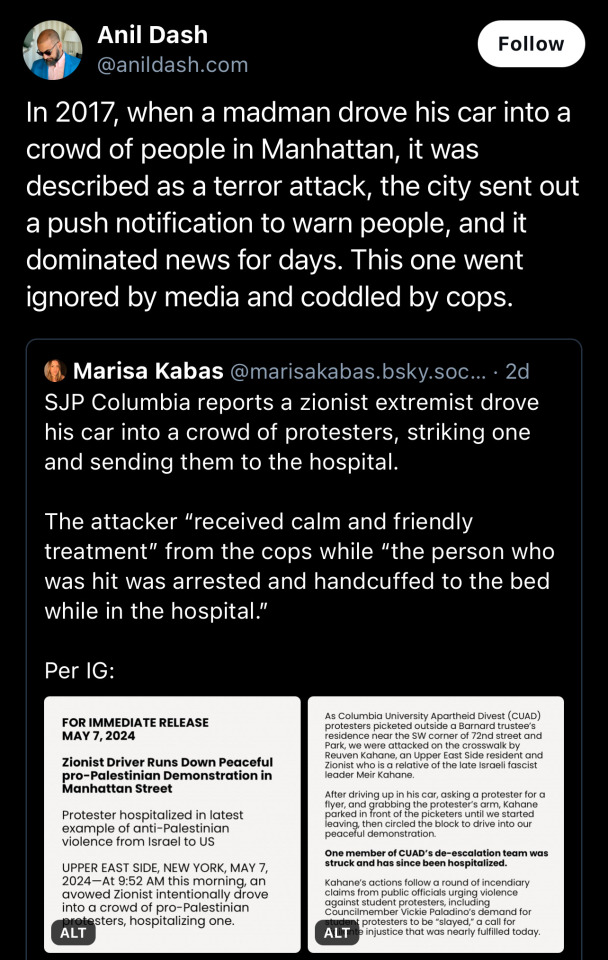
How much you wanna bet that the driver was either a cop or was friends with a cop?
14K notes
·
View notes
Text

4K notes
·
View notes
